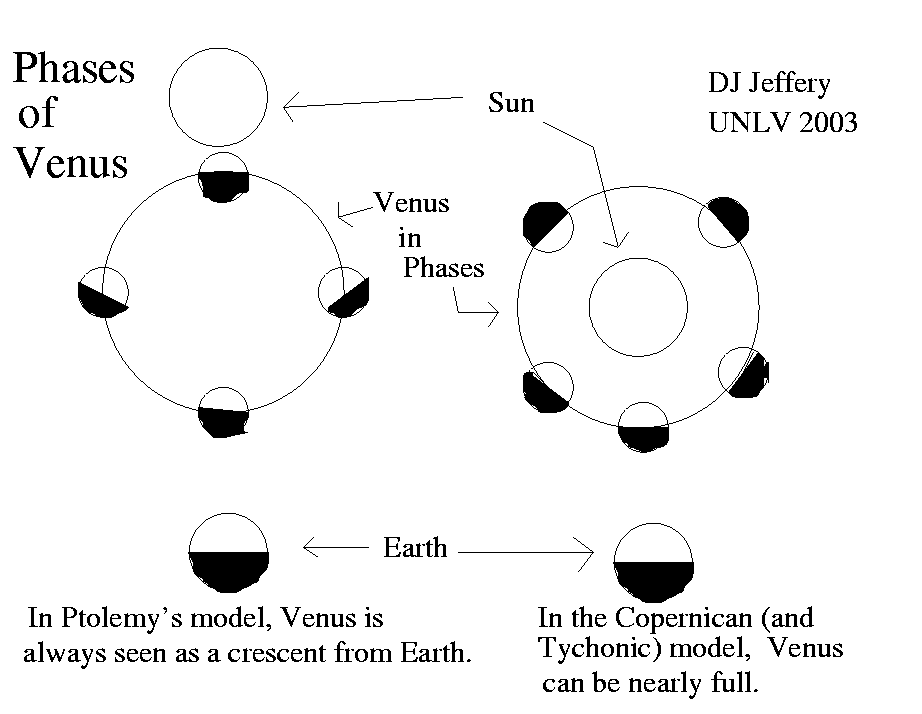
Caption: The phases of Venus in the Ptolemaic system (left side) and in the Copernican system (right side).
Features:
- If one assumes that Venus shines by
reflected
sunlight---which is true---then
Venus' is predicted to have
planetary phases
in both the
Ptolemaic system
and the Copernican system.
But the phases are predicted to
be different in the two cases as illustrated in the
diagram.
- In the Ptolemaic system,
Venus
orbits
on an epicycle
in front of the
Sun.
Both
Venus and
Sun then
orbit synchronously on their respective
deferents.
As the diagram shows, given our assumption, Venus should NOT show a full set of phases in the Ptolemaic system.
- In the Copernican system,
Venus
orbits the
Sun and should show
a full set of phases.
The full and nearly full phases of Venus are difficult to observe, but it can be done by projecting the telescope image on a screen rather than using direct visual astronomy.
- Galileo (1564--1642)
was the first to observe (in 1610)
and report (in
the Letters on Sunspots 1613)
that Venus
had phases
(and so did shine by
reflected
sunlight)
and that there are a full set of
phases
(see Wikipedia: Phases of Venus:
History).
Note, Galileo did NOT, in fact, report on the phases of Venus in Sidereus Nuncius (1610, in English The Star Messenger). However, in the telescoping of history, it's much the same as if he did.
- Galileo's observations showed the
Ptolemaic system
was wrong about the
phases of Venus,
and so was falsified
insofar as Venus was concerned.
But the observations were consistent with the Copernican system. The observations do NOT prove the Copernican system, but they are consistent with it.
But the observations are also consistent with Tychonic system. So fraidy cats could always take refuge in the Tychonic system.
- That Venus
has a full set of phases
is also inconsistent with
Aristotelian cosmology
which either
has Venus always closer or
farther than the Sun depending
on how exactly you want to arrange the compounded
celestial spheres on
which
Venus and
the Sun are carried.
- One can also add that
since Venus did shine by
reflected
sunlight,
Venus
was in that sense like the
Earth.
This Earth-likeness of Venus was evidence---but not by itself proving evidence---that the Earth was a planet as the Copernican system predicted. Probably, Galileo and some of contemporaries did note this evidence.
It has to be added that Venus unlike the Moon showed no sign of mountains and other geology.
Galileo and his contemporaries may that thought this was probably just due to the inadequacy of their telescopes. Their telescopes were inadequate, but, in fact, Venus is totally shrouded in a bland white-yellow Venusian atmosphere, and so the Venusian geology hidden in the visible band. The Venusian geology has been revealed in modern times principally by the Soviet Venera landers (1970--1982) and the NASA Magellan orbiter (1989--1994) which used radar mapping.
Local file: local link: venus_phases.html.
File: Ptolemy file: venus_phases.html.